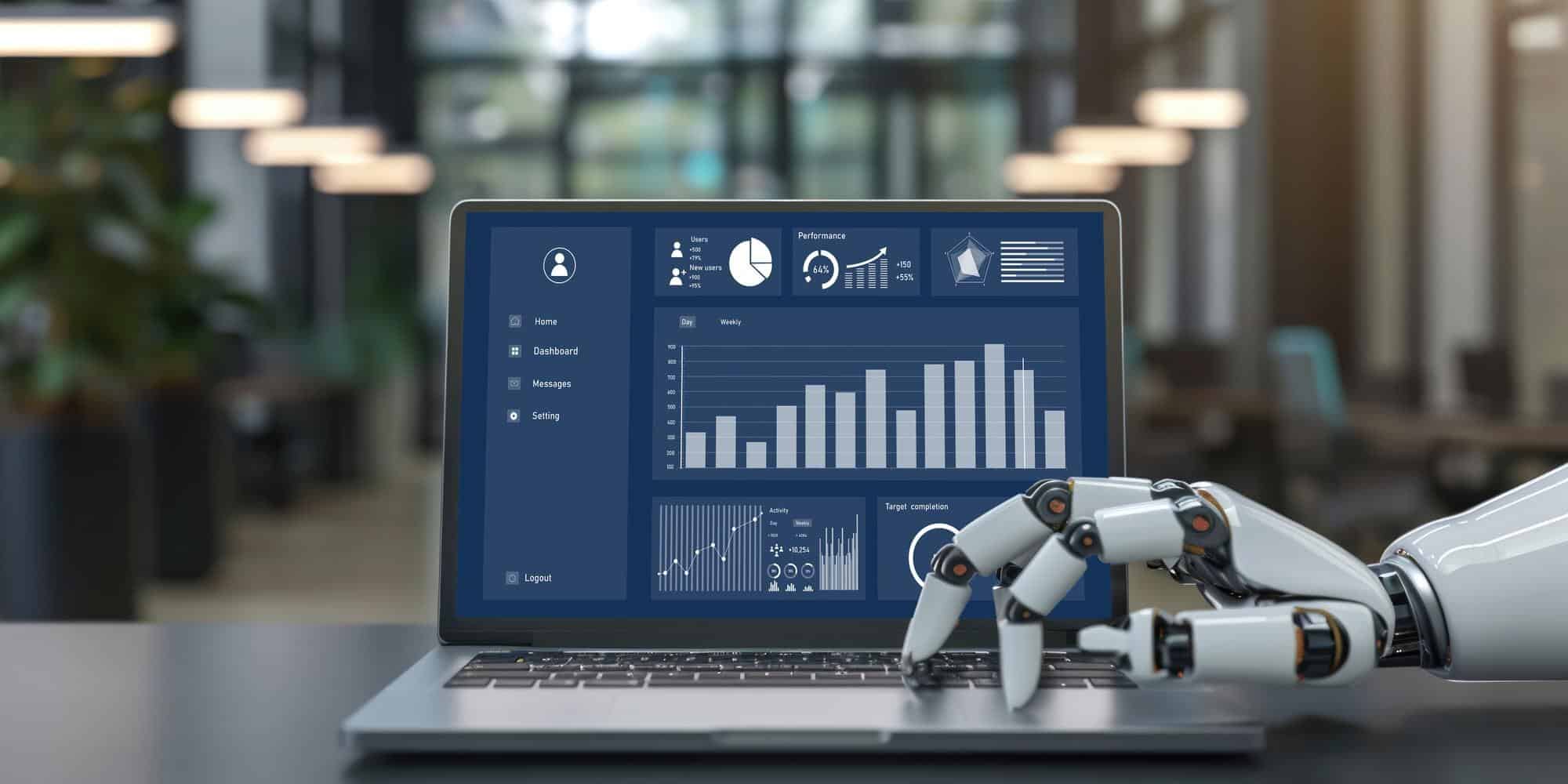Estimated reading time: 9 minutes
Key Takeaways
- AI is fundamentally reshaping work by automating routine tasks and surfacing deep insights that boost efficiency.
- Interpreting AI-driven productivity reports is essential for identifying bottlenecks and ROI opportunities.
- From task management to process mining, modern AI productivity tools reduce cognitive load and enhance outcomes.
- Machine learning productivity insights reveal patterns in work processes, enabling continuous improvement cycles.
- Powerful GPT and NLP applications accelerate content creation, synthesis, and communication at scale.
Table of contents
Introduction
Artificial intelligence is revolutionising workplace productivity at an unprecedented pace. From automating routine tasks to providing deep analytical insights, AI technologies are fundamentally changing how businesses operate, make decisions, and allocate resources. According to recent projections, these AI advancements are expected to lift global GDP by 1.5 % by 2035, marking one of the most significant technological impacts on economic growth in history.
“As artificial intelligence permeates operations, measurable gains in efficiency, quality, and decision-making compound across the enterprise.”
The AI for productivity report has become an essential tool for forward-thinking organisations. These comprehensive analyses help businesses understand how their AI investments translate into tangible productivity gains, uncover opportunities for further optimisation, and quantify the return on investment from artificial intelligence implementations.
Understanding and interpreting AI-driven productivity reports is no longer optional for businesses seeking competitive advantage. These reports provide crucial insights into workflow bottlenecks, resource allocation efficiency, and potential areas for AI enhancement. As artificial intelligence continues to reshape economic landscapes, the ability to leverage artificial intelligence productivity analysis separates industry leaders from those left behind.
Understanding AI for Productivity
Definition and Scope of AI in Productivity
AI for productivity encompasses a diverse range of technologies and methodologies designed to enhance work output and efficiency. These include intelligent automation systems that handle repetitive tasks, predictive analytics engines that optimise decision-making, and smart assistants that streamline workflows. Unlike traditional productivity tools, AI solutions continuously learn and adapt to changing conditions, making them increasingly valuable over time.
Explanation of Artificial Intelligence Productivity Analysis
Artificial intelligence productivity analysis involves systematic evaluation of how AI implementations impact key performance indicators. This process leverages sophisticated machine learning productivity insights to identify patterns in work processes that might remain hidden to human observers. These AI systems examine vast datasets encompassing employee behaviour, task completion times, resource utilisation, and business outcomes to generate actionable intelligence.
The analysis typically involves deploying machine learning models that track work patterns over time, establishing baselines, and measuring deviations following AI implementation. This approach enables organisations to quantify productivity gains empirically rather than relying on anecdotal evidence.
Overview of AI-Enhanced Work Efficiency
AI-enhanced work efficiency manifests in various forms across industries. In software development, AI coding assistants can generate functional code snippets in seconds, tasks that might take human programmers minutes or hours. In customer service operations, AI-powered sentiment analysis tools can instantly prioritise urgent communications, ensuring resources are allocated to high-value interactions.
Automated workflows represent another dimension of AI-enhanced efficiency. By integrating with existing business systems, AI can orchestrate complex sequences of tasks across departments, eliminating manual handoffs and reducing cycle times dramatically.
Key AI Productivity Tools
Detailed Look at Top AI Productivity Tools Available
The landscape of AI productivity tools continues to expand rapidly, with solutions addressing virtually every aspect of business operations. Leading examples include
- Intelligent task management systems that automatically prioritise work based on deadlines, dependencies, and strategic importance
- AI-powered content creation platforms that generate, optimise, and tailor communications for specific audiences
- Meeting assistants that transcribe conversations, extract action items, and follow up on commitments
- Data analysis tools that automatically surface insights and anomalies without requiring manual query building
- Process mining software that identifies inefficiencies in existing workflows and recommends improvements
These tools share common characteristics: they reduce cognitive load, eliminate repetitive tasks, and enhance human capabilities rather than simply replacing them.
How AI Productivity Software Streamlines Tasks
AI productivity software delivers efficiency gains through multiple mechanisms. Natural language processing (NLP) capabilities enable systems to understand and act on unstructured information in emails, documents, and conversations, removing the need for manual data entry and information categorisation and saving substantial time.
Predictive analytics components anticipate needs before they arise, such as automatically scheduling maintenance before equipment failure or proactively ordering inventory based on forecast demand. Machine learning algorithms continuously refine these predictions based on outcomes, making the entire system smarter over time.
Examples of AI-Powered Task Management Systems
AI-powered task management solutions represent some of the most widely adopted productivity enhancers. Systems leveraging GPT models can automatically generate task lists from meeting transcripts, prioritise them based on company objectives, and even draft initial deliverables to accelerate progress. They maintain context across projects, ensuring that related tasks are connected and dependencies are clearly identified.
These management systems excel at tracking progress and providing insightful summaries. Rather than requiring manual updates, they can automatically monitor activity across connected systems and generate status reports that highlight accomplishments, risks, and opportunities for acceleration.
AI Automation for Boosting Productivity
Benefits of AI Automation in the Workplace
AI automation for productivity delivers multiple benefits that extend beyond simple efficiency gains. By handling repetitive, rule-based tasks, automation dramatically increases processing speed while virtually eliminating human error. This dual improvement means not only faster operations but also reduced rework and quality issues.
Perhaps more significantly, AI in workplace productivity liberates human talent for higher-value activities. When employees are freed from data entry, report generation, and other routine tasks, they can focus on creative problem-solving, relationship building, and strategic thinking, areas where humans still maintain significant advantages over AI.
Economic analyses suggest that widespread adoption of AI automation could potentially increase GDP by trillions of pounds by 2030, with much of this value flowing directly to workers through higher wages and improved job satisfaction.
Case Studies Showcasing AI Automation for Productivity
Real-world implementations reveal both challenges and opportunities in AI automation for productivity. A study from software development teams showed that initial AI integration sometimes temporarily slowed productivity as teams adapted to new workflows. However, once these adjustment periods passed, the same teams reported 30–40 % increases in feature delivery rates with equivalent or improved quality.
In financial services, companies implementing AI for claims processing have reduced processing times from days to minutes while improving accuracy rates. Similarly, healthcare organisations using AI to automate medical coding report not only cost savings but also improved compliance and fewer denied claims.
Integration of AI Workflow Optimisation Techniques
Effective AI workflow optimisation requires thoughtful integration of technology and human oversight. The most successful implementations establish clear boundaries between AI and human responsibilities, with automated systems handling predictable elements while escalating exceptions to appropriate team members.
Progressive organisations run continuous improvement feedback loops where human experts regularly review AI outputs and provide guidance. These systems capture that feedback and refine their algorithms accordingly, gradually expanding the scope of automation while maintaining or improving quality standards.
Machine Learning and Productivity Insights
Role of Machine Learning in Generating Productivity Insights
Machine learning productivity insights represent one of the most valuable applications of AI in modern business. By analysing vast datasets encompassing employee activities, project milestones, resource utilisation, and business outcomes, machine learning models can identify previously invisible productivity bottlenecks and improvement opportunities.
These systems excel at detecting patterns that human analysts might miss, such as identifying optimal team configurations for specific project types, recognising early warning signs of burnout before performance degrades, or pinpointing the environmental factors that correlate with peak creative output.
How Machine Learning Models Analyse Work Patterns
The analysis of work patterns through machine learning involves sophisticated modelling techniques applied to multiple data streams. Adaptive models examine historical performance data to establish baseline productivity metrics, then continuously monitor current operations to detect meaningful deviations.
These systems can forecast resource needs with remarkable accuracy, predicting when demand will spike and which skill sets will be required. This foresight enables proactive resource allocation rather than reactive scrambling. Similarly, machine learning can identify when specific interventions, whether training, process changes, or technology enhancements, are likely to yield the greatest productivity improvements.
Utilising Machine Learning for Continuous Productivity Improvement
The true power of machine learning productivity insights emerges in continuous improvement cycles. As organisations implement changes based on initial findings, machine learning systems track outcomes and refine their recommendations accordingly. This iterative process enables increasingly targeted interventions that address the highest-impact opportunities.
Advanced implementations extend beyond identifying problems to automatically suggesting solutions based on patterns observed across the organisation or industry. For example, the system might notice that certain teams consistently outperform others on similar projects and automatically recommend adopting their specific workflows or communication practices.
GPT and NLP Applications for Productivity
Introduction to GPT Productivity Applications
GPT productivity applications leverage large language models to automate cognitive tasks that previously required human intelligence. These applications excel at content generation, information synthesis, and communication tasks, often performing them at speeds and volumes impossible for human workers.
Modern GPT systems can draft comprehensive documents based on minimal prompts, automatically generate code from natural language descriptions, translate technical information for different audiences, and summarise extensive reports into actionable highlights. Their ability to understand context and maintain consistency across long-form content makes them particularly valuable for knowledge workers.
Leveraging Natural Language Processing (NLP) for Productivity
NLP for productivity extends beyond content creation to information processing and knowledge management. These systems can analyse thousands of documents, emails, and communications to extract key insights, identify trends, and surface relevant information without requiring manual searches.
Video
FAQs
How do AI-driven productivity reports help decision-making?
They highlight workflow bottlenecks, resource allocation efficiency, and ROI, enabling leaders to prioritise high-impact improvements grounded in empirical data rather than anecdotal evidence.
What tasks are best suited for AI automation in the workplace?
Repetitive, rule-based processes such as data entry, report generation, claims processing, and transcription are ideal candidates, freeing people to focus on creative and strategic work.
How do machine learning models uncover productivity insights?
By analysing historical and real-time operational data to detect patterns, forecast resource needs, and recommend targeted interventions that deliver measurable productivity gains.
Where do GPT applications provide the most value?
They excel in content creation, synthesis, summarisation, and translation, as well as generating code or drafting deliverables that accelerate knowledge work.
What is required for effective AI workflow optimisation?
Clear role boundaries between humans and AI, continuous feedback loops, and iterative model improvements to safely expand automation while maintaining quality.







